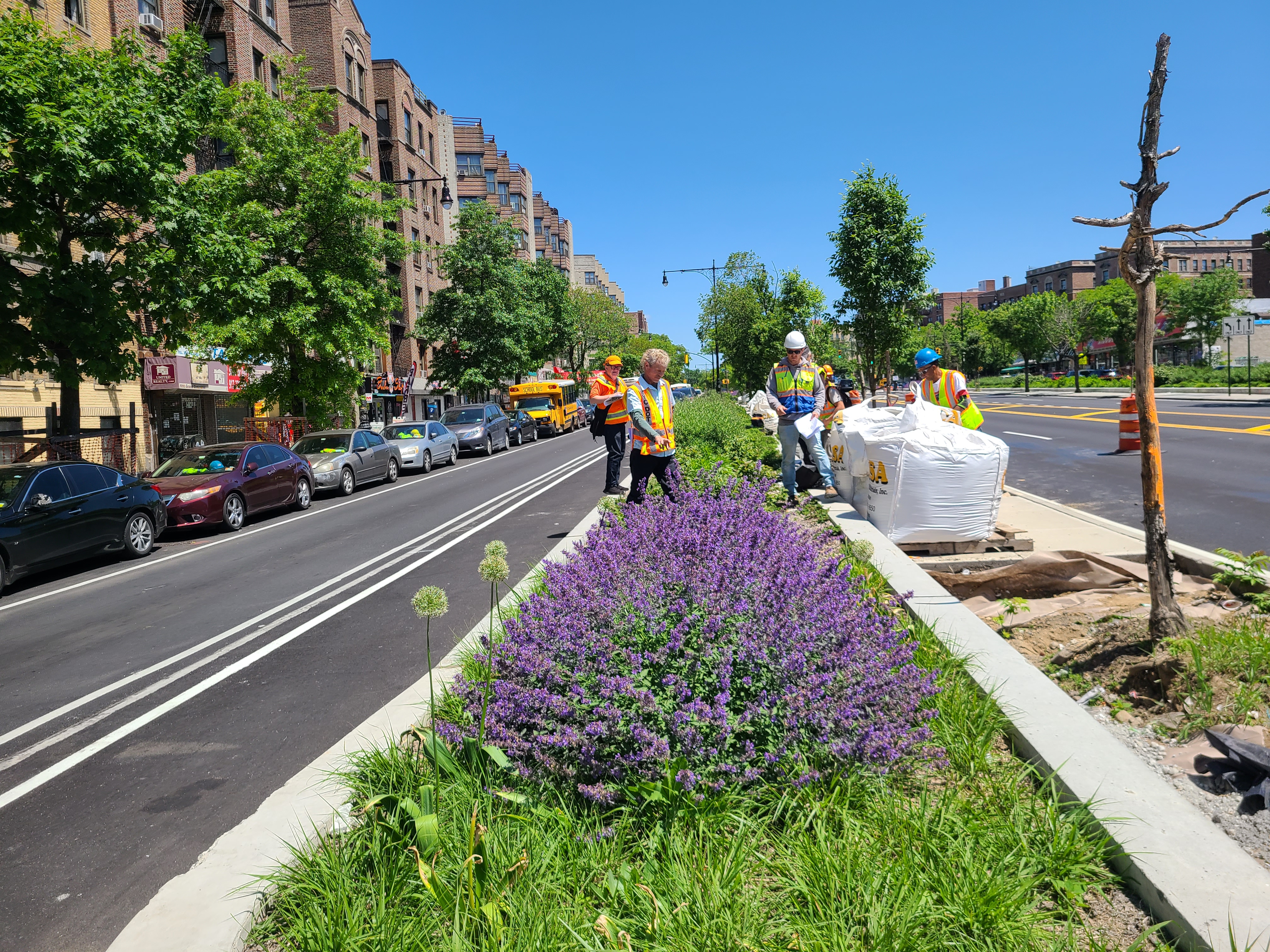The Landscape Maintenance program supports DOT’s ability to transform streets throughout the city and deliver quality landscapes. Services include, but are not limited to, weed control, litter removal, flower and foliage care, clean-up of landscape beds, herbaceous plant and shrub trimming, plant installation and replacement, mulching, fertilizing, watering, syringing plants and flushing landscaped beds, amending or replenishing soil, integrated pest management (including insects, fungi, other pests, and rodent control), inspections, irrigation installation, irrigation repair, and irrigation system management (including start-up and shutdown). The objective is to utilize best horticultural practices to promote the health and optimal appearance of right-of-way landscaped areas.
This work is performed by MWBE-certified landscape maintenance contractors on DOT’s behalf with oversight and management performed by DOT staff with horticulture and landscape backgrounds. This expertise is critical in guiding the work.
The contracts are also structured to allow DOT to order a range of services to respond to an ever-changing set of on-the-ground conditions prevalent with a living landscape.

Raised median adjacent to protected bike lane is scheduled for planting as part of Grand Concourse Capital project